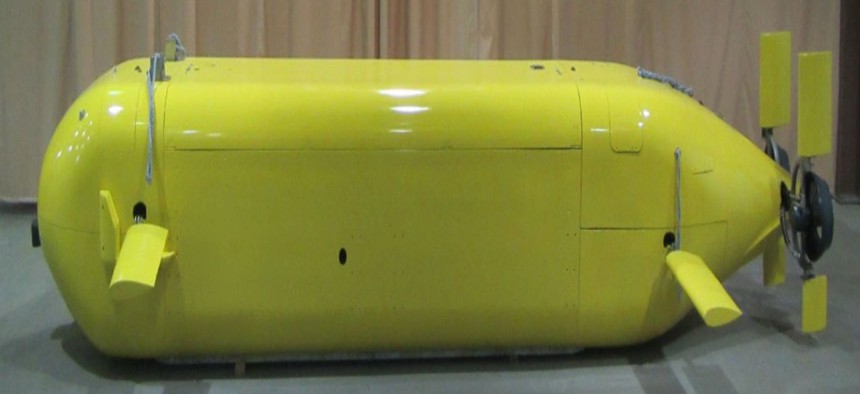Navy accelerates Orca undersea drone program
The Navy has narrowed the field of competitors for one of its unmanned underwater drone programs to a Boeing-Huntington Ingalls team and Lockheed Martin team amid expectations of increased spending in that area.
The Navy has narrowed the field of competitors for one of its unmanned underwater drone programs to a Boeing-Huntington Ingalls team and Lockheed Martin team amid expectations of increased spending in that area.
Both parties received contracts to embark on design efforts for phase one of the “Orca” Extra Large Unmanned Undersea Vehicle program, the Defense Department said in its Thursday contracts digest. The Navy received three bids and awardees will also work to deliver a technical data package with their vehicles.
Boeing is the prime contractor in its partnership with military shipbuilder Huntington Ingalls and received a $42.2 million phase one award, while Lockheed was awarded $43.1 million. The Navy is obligating $16.5 million in initial funds to both parties at the time of award and expects all contract work to complete by December 2018.
-This Story Originally Appeared in Defense Systems Partner Publication Washington Technology-
The Navy intends to downselect to a final winner for Orca by the end of calendar year 2018, or the first quarter of the government's 2019 fiscal year, a Navy spokesperson told Washington Technology. The winning company will build up to five vehicles under the downselect contract, the spokesperson said.
The Boeing-HII team is offering the former’s 55-foot-long Echo Voyager vehicle in pursuit of the Orca program, Boeing’s autonomous systems unit leader Chris Raymond told Washington Technology in August. Boeing has made the unmanned undersea domain a growth priority through its acquisition of California-based drone maker Liquid Robotics in December 2016 and the partnership with HII announced in June.
Lockheed has also made forays into unmanned undersea technologies as the defense contractor’s venture capital arm disclosed earlier this month an investment in San Diego-based Ocean Aero, another maker of underwater drones. Ocean Aero’s Submaran S10 model is about 13 feet long and 8 feet high at a weight of 280 pounds.
Boeing and Lockheed are not the only large defense primes to identify unmanned underwater platforms as an avenue for growth. General Dynamics and L3 Technologies also have acquired undersea drone makers over the past year-and-a-half. The U.S. military has plans to invest as much as $3 billion into undersea systems over the coming years, the Washington Post reported last year.
Through Orca, the Navy is seeking a reconfigurable underwater drone with a modular and open architecture that can travel to a location, loiter and periodically establish communications. The vehicle should also be able to deploy payloads and subsequently return to its host, according to a solicitation for Orca in March.
Orca’s dimension requirements have the modular payload bay or bays of at least 60 inches in height, 125 inches in length and total volume of 325 feet.






